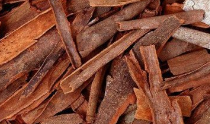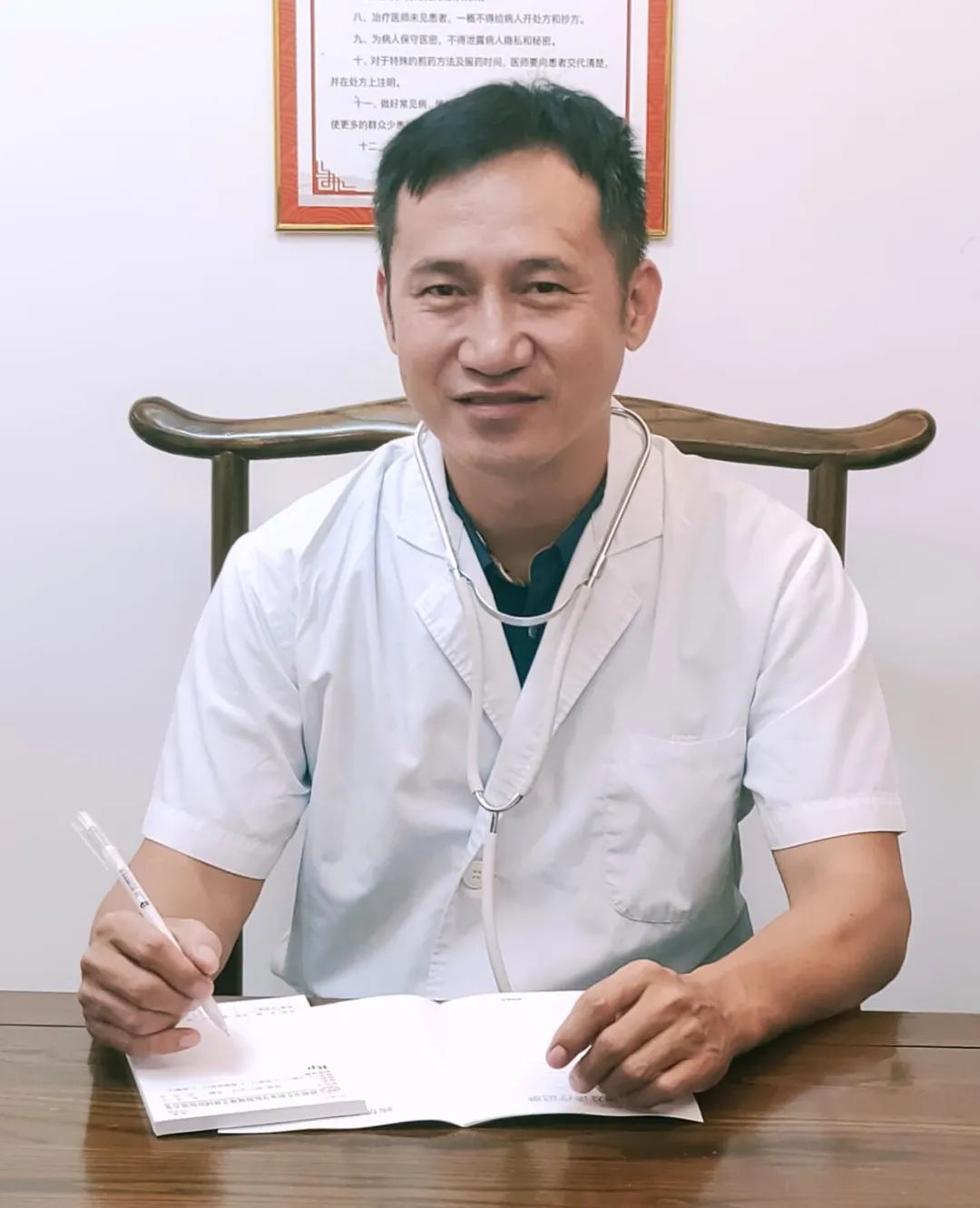Cinnamon bark contains volatile oil 1%–2%, with the main component being cinnamaldehyde 75%–90%, and contains small amounts of cinnamyl acetate, phenylpropyl acetate, etc. It also contains mucilage, tannins and other compounds.

【Pharmacological Effects】
(1) Antibacterial Effect: Cinnamon oil has a strong antibacterial effect, being more effective against Gram-positive bacteria than Gram-negative bacteria. Due to its irritant properties, it is rarely used as an antibacterial drug. This product also has antifungal properties.
(2) Antihypertensive Effect: The combination of Fuzi (Aconitum) and cinnamon has an antihypertensive effect on adrenal cortical hypertension. This effect may be due to the promoting function of Fuzi and cinnamon reducing adrenal activity, bringing it back to normal.
(3) Effects on the Digestive System: Cinnamon oil can stimulate the gastrointestinal tract, enhancing digestive absorption, alleviating gastrointestinal spasmodic pain, expelling gas from the digestive tract, and inhibiting abnormal fermentation in the intestines.
【Traditional Functions】 Warming the middle and tonifying Yang, dispersing cold and alleviating pain. Used for kidney Yang deficiency, fear of cold with cold limbs, spleen Yang deficiency, cold pain in the abdomen, reduced appetite with diarrhea, prolonged illness with weakness, Qi deficiency with blood deficiency, Yin sores that are white in color, swellings that do not ulcerate or do not heal after long-term ulceration, etc.
【Dosage and Administration】 Oral: decoction, 1.5–4.5g; or in pills or powders. External use: ground into powder for topical application or soaked in alcohol for rubbing.
【Contraindications】
(1) Contraindicated for those with Yin deficiency and excess heat.
(2) Pregnant women should use with caution.
【Clinical Applications】
(1) Neurodermatitis: Cinnamon was used to treat 50 cases of neurodermatitis, with generally mild cases cured after 1 application, and severe cases after 2–3 applications. Treatment method: Grind 200g of cinnamon into a very fine powder, seal in a bottle for later use. When needed, take an appropriate amount of cinnamon powder according to the size of the lesion, mix with good rice vinegar to form a paste, apply to the lesion, and remove after 2 hours when the paste is dry. If not cured, repeat the application after 1 week.
(2) Urticaria: Huang Minghe treated 28 cases of chronic urticaria with guilizin, achieving clinical cures in 21 cases and improvements in 7 cases. Treatment method: Oral guilizin, 50mg per dose, 3 times a day, for the first 2–3 days. After the wheals disappear, reduce to 25mg, 3 times a day, maintaining this dose for 5–7 days, while also taking Wushao Zhi Yang Wan, 10 pills each time, 3 times a day.
(3) Low Back Pain: It was reported that Zhou Guangming treated 102 cases of low back pain due to kidney Yang deficiency (including 35 cases of rheumatic spondylitis, 5 cases of rheumatoid spondylitis, 55 cases of lumbar muscle strain, and 7 cases of unknown causes), with 47 cases cured, 39 cases significantly effective, 14 cases effective, and 2 cases ineffective. The total effective rate was 98.04%. Method: Oral cinnamon powder, 5g each time, 2 times a day. Treatment course was 3 weeks.
(4) Hydrocele in Children: Grind equal parts of cinnamon and borneol into a very fine powder, seal in a bottle for later use. Take a black plaster, sprinkle an appropriate amount of the powdered medicine on it, and apply to the affected area. Zhao Guolin used this method to treat 10 cases of hydrocele in children and 5 cases of subcutaneous hematoma in newborns, all cured after 1–3 applications. Follow-up for 10 years showed no recurrence.
(5) Salivation in Children: Lan Maopu treated 6 cases of salivation at the corners of the mouth in children (due to spleen Yang deficiency) with cinnamon powder, achieving cures after 3–5 applications. Treatment method: Take 10g of cinnamon powder (single dose), mix with vinegar to form a paste, and apply to both sides of the Yongquan (Kidney 1) points on the feet before bedtime, securing with adhesive tape, and remove the next morning.
(6) Bronchial Asthma: 1g of cinnamon powder was added to 10ml of anhydrous ethanol, allowed to stand for 10 hours, then take 0.15–0.3ml, add 2% procaine to make 2ml and mix well, injecting into both sides of the Feishu (Bladder 13) points, 1ml each time. Zheng Guohui and others treated 21 cases of bronchial asthma with this method, controlling attacks in 19 cases, with 1 case each of symptom relief and ineffectiveness.
(7) Impotence: Tang Yejian treated 18 cases of impotence with cinnamon, achieving a total effective rate of 98%. The formula included 30g each of cinnamon, quicklime, chive seeds, epimedium, and fennel, all ground together, soaked in 60ml of white liquor, heated in a sand pot, and applied as a hot compress to the Mingmen (GV 4) and Guanyuan (CV 4) points before bedtime. One dose can be used 3 times, reheating with more white liquor each time.
(8) Pseudomonas aeruginosa Infection: Take 0.5% cinnamon oil in a disinfected container, soak gauze in the medicinal liquid to dress wounds or insert into wounds and body cavities, changing daily. It can also be sprayed on the wound surface 3 times a day. Treatment results: Li Ping and others treated 11 cases of Pseudomonas aeruginosa infection (including 7 cases of burns, 3 cases of osteomyelitis, and 1 case of abdominal wall stoma), all achieving significant efficacy. Among the 7 burn cases, 4 were cured and 3 were significantly effective; among the 3 osteomyelitis cases, 2 were significantly effective and 1 was effective; the abdominal wall stoma case healed within 5 days.
(9) Stenosing Tenosynovitis: Grind equal parts of cinnamon and clove into fine powder. Fresh ginger is cleaned and cut into thin slices, with 6–7 small holes pricked in the middle for later use. First, sprinkle a small amount of the powdered medicine on the painful area, then place the ginger slices on top. Use moxa to create moxa cones on the ginger slices and ignite them. This method was used to treat 25 cases of stenosing tenosynovitis, with 23 cases cured and 2 cases improved, achieving a total effective rate of 100%.
(10) Diarrhea in Infants: Use a warm umbilical plaster (containing cinnamon, moxa, and Fuzi) for external application to the umbilical area, covering with a 5cm × 5cm dressing, securing with adhesive tape, and lightly massaging for a moment. Apply once a day for a course of 4 days. Use with caution in cases of fever, and do not use if the skin around the umbilicus is broken or ulcerated. Avoid cold, oily, and greasy foods. After 1–2 courses, results showed that out of 200 cases, 156 were cured, 39 improved, and 5 ineffective, with a total effective rate of 97.50%.
(11) Insomnia after Detoxification: (This condition refers to withdrawal symptoms after detoxification in heroin-dependent individuals.) In the treatment group of 45 cases, Jiaotai Wan (containing equal parts of cinnamon and Huanglian) was made into capsule form, each capsule 0.3g, 14 capsules; the control group of 30 cases used estazolam 1–4mg; both taken before sleep. Other medications were discontinued. Results: The treatment group cured 15 cases, improved 27 cases, and had 3 ineffective cases, while the control group cured 2 cases, improved 15 cases, and had 13 ineffective cases, with total effective rates of 93.33% and 56.67% respectively (P<0.01).
(12) Fever and Rash in Children: 30g each of cinnamon and Wuzhuyu were ground into powder, and an appropriate amount of the powder was mixed with rice vinegar to form a paste. Every evening, take 5g and apply to both Yongquan (Kidney 1) points on the child’s feet, removing the next morning, and continue for 3 days to achieve effect.
Source: A Single Herb to Cure Stubborn Diseases, Chief Editors: Li Shiwen, Kang Manzhen



Traditional Chinese Medicine Acupuncture and Tuina Department: Xie Yibing

★ Associate Professor
★ Associate Chief Physician
Profile
Graduated from Fujian University of Traditional Chinese Medicine in 1990, with over 30 years of clinical experience.
Specialties
1. TCM Specialization in Rhinitis and Chronic Cough: Utilizing rhinitis ointment and floating needle therapy to treat various acute and chronic rhinitis, allergic rhinitis, sinusitis, tonsil or adenoid enlargement, chronic cough, asthma, etc. Also treating recurrent colds that are difficult to resolve, chronic pharyngitis, tonsillitis, snoring, frequent blinking, otitis media, etc.
2. TCM Yang-Tonifying Acupuncture and Qi Guidance: Various constitution adjustments: treating female Yang deficiency with cold uterus, cold limbs, menstrual pain, headaches, infertility; treating Qi and blood deficiency, mental fatigue, easy fatigue, easy colds, and chronic illnesses that are difficult to resolve. Also for detoxification and fat reduction: treating abdominal obesity, primary hypertension (grades 1 and 2), hyperlipidemia, gout, and treating allergic urticaria, eczema, neurodermatitis, acne, etc.
3. TCM Pain Specialization: Utilizing rapid effect muscle relaxation and pain relief techniques, floating needle therapy, etc., to treat various acute and chronic soft tissue injuries, pain caused by degenerative changes, arthritis, spinal diseases, and related visceral dysfunctions. Specializing in treating cervical spondylosis, vertigo, lumbar disc herniation, lumbar muscle strain, chronic gastroenteritis with abdominal distension and pain, etc.
4. TCM Pediatric Tuina: Treating common pediatric conditions such as colds, coughs, poor appetite, food stagnation, enuresis, diarrhea, and torticollis.

【Disclaimer】The images and text are sourced from the internet or books, and the copyright belongs to the original authors. If there is any infringement, please contact us for removal!
Warm Reminder: This platform shares health-related images and information for reference, learning, and communication purposes only, and should not be used as a basis for medical diagnosis. Please use under the guidance of a physician if needed.
